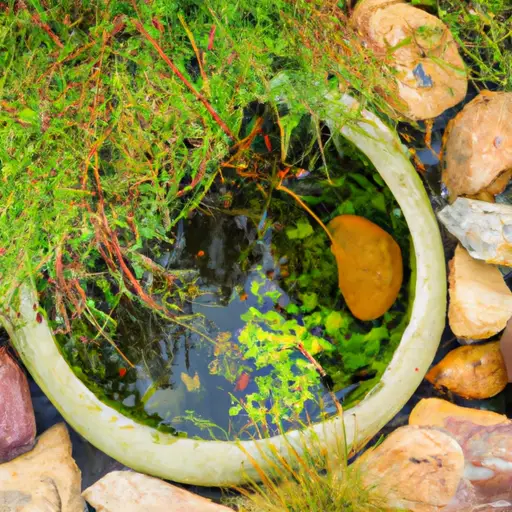Cultivate Tranquility with Serene Water Gardens in Containers
Water has long been associated with a sense of tranquility, peace, and serenity. The sound of gentle waves lapping against the shore, the soothing sight of a tranquil lake, or the rhythmic flow of a cascading waterfall all have a calming effect on our minds. In recent times, people have started to incorporate water features into their homes and gardens to cultivate a serene environment in their living spaces. One such popular trend is creating serene water gardens in containers.
Water gardens are spaces where aquatic plants and fish thrive together in harmony. Traditionally, these gardens were created in large ponds or sprawling landscapes. However, advancements in container gardening have made it possible for even those with limited space to enjoy the beauty and serenity of water gardens.
Creating a water garden in containers requires careful planning and proper execution. It involves selecting suitable plants and fish, choosing appropriate containers, setting up filtration systems, and maintaining optimal conditions for the plants and fish to thrive. Let us explore each step in detail to help you create your own tranquil oasis.
1. Choosing Suitable Plants:
Selecting the right aquatic plants is crucial for the success of your water garden. Some popular floating plants include water lettuce (Pistia stratiotes) and water hyacinth (Eichhornia crassipes), both of which provide shade and help control algae growth. Submerged or oxygenating plants like hornwort (Ceratophyllum demersum) oxygenate the water by absorbing carbon dioxide and releasing oxygen.
Marginal plants like dwarf papyrus (Cyperus isocladus) or sweet flag (Acorus calamus) grow at the edges of the container, adding visual appeal while serving as natural filters. Water lilies (Nymphaea spp.) are also great additions as they provide beautiful blooms while their leaves provide shade for fish and control algae growth.
2. Selecting Suitable Fish:
Fish are an integral part of a water garden, providing movement, color, and fascination. When selecting fish for your container water garden, consider their size, temperature requirements, and compatibility with other species. Goldfish and Koi are popular choices due to their vibrant colors and adaptability to different environments. However, ensure that the container is large enough to accommodate their growth.
3. Choosing Containers:
Container selection is crucial as it determines the success of your water garden. Opt for containers that are at least 12 inches deep to provide enough space for plant roots and fish to thrive. Additionally, containers with wide mouths help maximize sunlight exposure while facilitating easy plant maintenance.
Terracotta pots or glazed ceramic containers are aesthetically pleasing options but may require additional waterproofing measures. Alternatively, plastic or fiberglass containers are lightweight, easy to handle, and often come with built-in shelves for marginal plants.
4. Setting up Filtration Systems:
Maintaining optimal water quality is essential for a healthy water garden ecosystem. Filtration systems help remove debris, excess nutrients, and harmful chemicals from the water while maintaining a balanced pH level.
Simple filtration mechanisms like pumps and filters can be incorporated into the container itself. Water can be circulated through a pump that transports it through a filter medium before returning it to the container. UV clarifiers can also be used to control algae growth by eliminating free-floating algae cells.
5. Maintaining Ideal Conditions:
Regular maintenance is necessary for the long-term health of your water garden in a container. Keep an eye on the water temperature as drastic changes can stress or harm aquatic life. During hot weather conditions, you may need to provide shade or relocate the container temporarily to ensure ideal temperature conditions.
Regularly remove any dead leaves or decaying matter from the surface of the water to prevent nutrient buildup and maintain clean water conditions. Conduct periodic water tests to monitor pH levels, ammonia, and nitrate levels, and adjust as necessary.
In conclusion, creating a serene water garden in a container allows you to bring the tranquil beauty of water into even the smallest of spaces. By carefully selecting suitable plants and fish, choosing appropriate containers, setting up filtration systems, and maintaining ideal conditions, you can cultivate an oasis of tranquility right at home. So go ahead and embark on this journey to serenity by creating your own serene water garden in a container.














